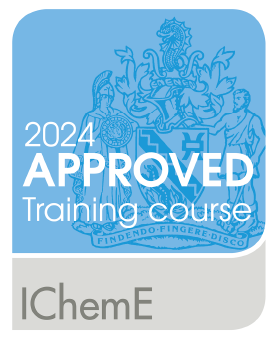

Hazard and operability study (also called HazOp, or hazard study 3) is the most commonly used technique used for chemical process risk assessment. It is a structured approach for considering what could go wrong with the process (this is called a “deviation” from the design intent), and the consequences of this.
The study is carried out by a multi-disciplinary team, led by a trained and experienced facilitator. The process is split into bite-sized chunks, called “nodes”, and then a series of guidewords such as “no flow”, “high temperature”, “high level” are applied to each guideword. For example, “high temperature” could be caused by a steam valve sticking in the open position.
For each potential cause of a deviation identified, the facilitator will ask the team what the consequence of that deviation is. Continuing with the example above, high temperature could cause anything from a ruined batch of product to an exothermic runaway reaction. It is important that both the immediate AND ultimate consequences are established, for instance not stopping at “vessel overpressurised”, but going on to explain the consequences of that high pressure on people, the environment or the plant asset. In the case of high pressure this would commonly be vessel rupture, a loss of containment of whatever is in the vessel, and a combination of flying missiles, toxic effects or fire, causing injury or fatality to a plant operator.
The next step in the process is to establish what safeguards or control measures are in place. In the case of high temperature, this could include high temperature alarms or trips. For high pressure, protection may be provided by a relief valve or bursting disc. A process risk matrix may then be used to give an indication of the level of residual risk remaining, and whether the risk is tolerable or not.
If the risk is not tolerable, or if the team believes that more can be done ‘reasonably practicably’ to reduce the risk, further actions will be recorded and assigned to one of the team members to complete.
For more information on HazOp, see what is a HazOp?

 HazOp Training for Leaders
HazOp Training for Leaders
For people who already have some experience of HazOp, and now want to go on to facilitate hazard study meetings.

 HazOp Training for Team Members
HazOp Training for Team Members
For anyone attending HazOp or other hazard study meetings as a team member.
Project to model a LOPA scenario using a Fault Tree Analysis methodology. The analysis modelled the relationship between the initiating causes, protection layers and consequence identified within the LOPA scenario.
Industry: Mining / Metal / CementProject to carry out a Hazard and Operability (HazOp) study on a Mitchell Water Tube Boiler.
Industry: Mining / Metal / CementProject to carry out a Hazard and Operability (HazOp) study on a steel manufacturing Basic Oxygen Steelmaking Gas (BOSG) facility.
Industry: Mining / Metal / CementProject to carry out a Hazard and Operability (HazOp) study on Coke Oven Under Firing System. The coke ovens underfiring and heating process consists of two fuel systems - Blast Furnace Gas (BFG) and Coke Oven Gas (COG), a reversal winch system and a waste gas system.
Industry: Mining / Metal / CementProject to carry out a Hazard and Operability Study (HazOp) on a Distillery Expansion. The expansion included the addition of additional Washbacks (in the existing Tun Room); the construction of a new Still House to contain new wash stills and a new Spirit Still; a wash water pre-heat system; additions to the CIP system and relocation (and modification) of the existing Cooling Tower.
Industry: Brewing and Distilling
You can contact =Method below:
p: +44 (0)1462 713313
E: support@methodprosafe.com. T: 44 (0)1462 713313. W: www.methodprosafe.com